Tarte aux poires
Taken from...
Taken from Tuesdays with Dorie
For the pears:
6 canned pear halves OR 3 medium pears, firm but ripe (I used fresh)
1 lemon
4 cups water, optional
1 1/4 cups sugar, optional
For the almond cream:
6 tablespoons unsalted butter, at room temperature
2/3 cup sugar
3/4 cup ground blanched almonds
2 teaspoons all-purpose flour
1 teaspoon cornstarch
1 large egg
2 teaspoons dark rum or 1 teaspoon pure vanilla extract
1 partially-baked 9-inch tart shell, made with Sweet Tart Dough (see below), at room temperature
Confectioners' sugar for dusting, or apple jelly for glazing
To make the almond cream: Put the butter and sugar in the workbowl of a food processor and process until the mixture is smooth and satiny. Add the ground almonds and continue to process until well blended. Add the flour and cornstarch, process, and then add the egg. Process for about 15 seconds more, or until the almond cream is homogeneous. Add the rum or vanilla and process just to blend. If you prefer, you can make the cream in a mixer fitted with the whisk attachment or in a bowl with a rubber spatula. In either case, the ingredients are added in the same order. Scrape the almond cream into a container and either use it immediately or refrigerate it until firm, about 2 hours.
Getting ready to bake: Center a rack in the oven and preheat the oven to 350 degrees F. Have a lined baking sheet at the ready. If you are using fresh (unpoached) pears, peel them now. If you are using poached or unpoached pears, cut them in half from blossom to stem and core them; rub the unpoached pears with lemon juice. Whatever pears you have, make sure to pat them dry - really dry - so that their liquid won't keep the almond cream from baking.
Fill the baked crust with the almond cream, spreading it even with an offset metal icing spatula. Thinly slice each pear half crosswise, lift each half on a spatula, press down on the pear to fan it slightly and place it, wide-end toward the edge of the crust, over the almond cream. The halves will form spokes.
Put the crust on the lined baking sheet, slide the sheet into the oven and bake the tart 50 to 60 minutes, or until the almond cream puffs up around the pears and browns. Transfer the tart to a rack to cool to just warm or to room temperature before unmolding.
Right before serving, dust the tart with confectioners' sugar. If you prefer, prepare a glaze by bringing about 1/4 cup apple jelly and1/2 teaspoon water to the boil. Brush the glaze over the surface of the tart.
SWEET TART DOUGH (Adapted from BAKING FROM MY HOME TO YOURS, but taken from my manuscript, so the wording may be a little different from the way it appears in the book)
1 1/2 cups all-purpose flour
1/2 cup confectioners' sugar
1/4 teaspoon salt
1 stick plus 1 tablespoon (4 1/2 ounces) very cold (or frozen) unsalted butter, cut into small pieces
1 large egg yolk
To make the dough: Put the flour, confectioners' sugar and salt in the workbowl of a food processor and pulse a couple of times to combine. Scatter the pieces of butter over the dry ingredients and pulse until the butter is cut in coarsely - you'll have pieces the size of oatmeal flakes and pea-size pieces and that's just fine. Stir the egg, just to break it up, and add it a little at a time, pulsing after each addition. When the egg is in, process in long pulses - about 10 seconds each - until the dough, which will look granular soon after the egg is added, forms clumps and curds. Just before your reaches this clumpy stage, the sound of the machine working the dough will change - heads up. Turn the dough out onto a work surface.
Very lightly and sparingly - make that very, very lightly and sparingly - knead the dough just to incorporate any dry ingredients that might have escaped mixing.
If you want to press the dough into a tart pan, now is the time to do it.
If you want to chill the dough and roll it out later (doable, but fussier than pressing), gather the dough into a ball (you might have to use a little more pressure than you used to mix in dry bits, because you do want the ball to be just this side of cohesive), flatten it into a disk, wrap it well and chill it for at least 2 hours or for up to 1 day.
To make a press-in crust: Butter the tart pan and press the dough evenly along the bottom and up the sides of the pan. Don't be stingy - you want a crust with a little heft because you want to be able to both taste and feel it. Also, don't be too heavy-handed - you want to press the crust in so that the pieces cling to one another and knit together when baked, but you don't want to press so hard that the crust loses its crumbly shortbreadish texture. Freeze the crust for at least 30 minutes, preferably longer, before baking.
To make a rolled-out crust: This dough is very soft - a combination of a substantial amount of butter and the use of confectioners' sugar - so I find it is easier to roll it between wax paper or plastic wrap or, easiest of all, in a roll-out-your-dough slipcover. If you use the slipcover, flour it lightly. Roll the dough out evenly, turning the dough over frequently and lifting the wax paper or plastic wrap often, so that it doesn't roll into the dough and form creases. If you've got time, slide the rolled out dough into the fridge to rest and firm for about 20 minutes before fitting the dough into the buttered tart pan. Trim the excess dough even with the edge of the pan. Freeze the crust for at least 30 minutes, preferably longer, before baking.
To partially bake the crust: Center a rack in the oven and preheat the oven to 375 degrees F. Butter the shiny side of a piece of aluminum foil and fit the foil tightly against the crust. Bake the crust 25 minutes, then carefully remove the foil. If the crust has puffed, press it down gently with the back of a spoon. Bake for another 3 to 5 minutes, then transfer the crust to a cooling rack; keep it in its pan.
Her recipe is lengthy, but it's perfect if you're a beginner, and sets up a pretty good foundation for other tart making endeavors, which you undoubtedly will have, if you've invested in a wonderful tart tin for this recipe ;) The reason I love this recipe so much is because of the almond filling. YUM! It's much richer than a boring old pastry or bavarian cream that you'd find in a fruit tart (not that bavarian/pastry cream is not good, I mean come on, it's like 60% heavy cream or something ridiculous like that), and it's a perfect compliment to the acidity of the lemon juice and pears. AHHHHH. Yum.

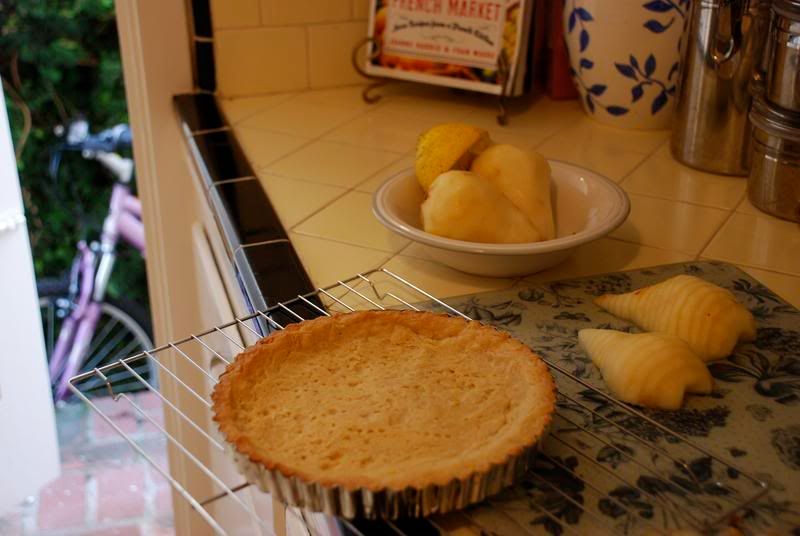
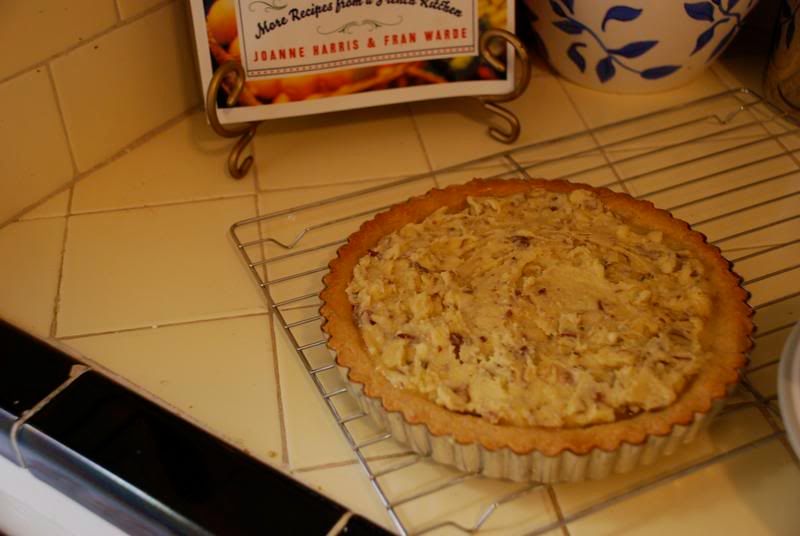
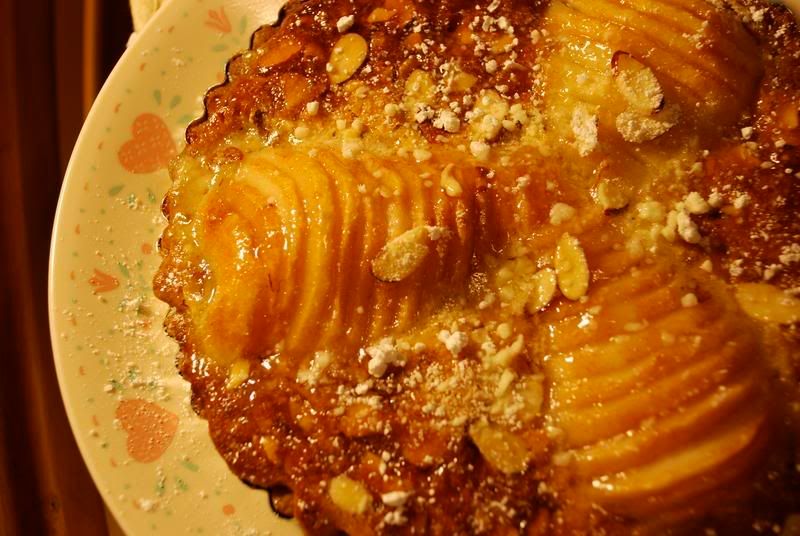
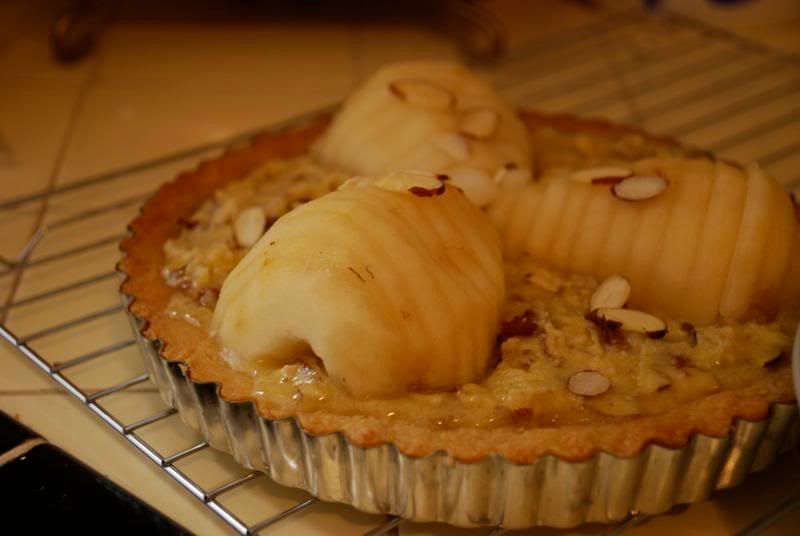
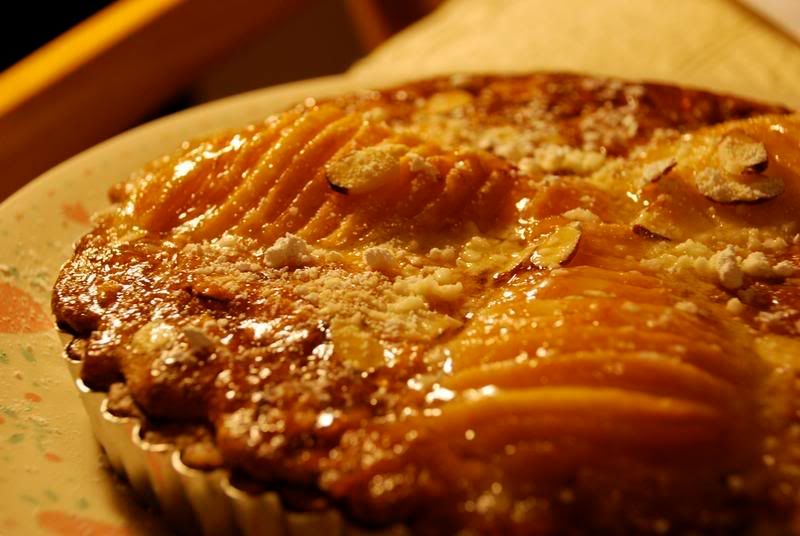
No comments:
Post a Comment